Abstract:
In this work, a ferroelectric domain-enhanced electron emission mechanism is proposed. The polarization distribution near 90deg domain walls is calculated by solving a se...Show MoreMetadata
Abstract:
In this work, a ferroelectric domain-enhanced electron emission mechanism is proposed. The polarization distribution near 90deg domain walls is calculated by solving a set of second order differential equations, including the Poisson's one and equations derived from an expansion of the free energy Phi(P) in power series of the polarization according to the Devonshire-Landau-Ginzburg theory. Domain walls intersecting the emitting surface cause sufficient electric fields and lower the potential barrier for electron emission. This induces centers of enhanced electron emission. Relaxing domain walls were found to excite trapped excess electrons in front of the wall.
Published in: IEEE Transactions on Ultrasonics, Ferroelectrics, and Frequency Control ( Volume: 54, Issue: 12, December 2007)
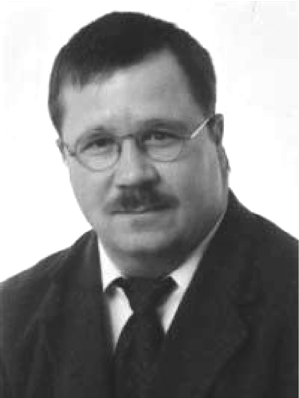
Technische Universität Dresden, Solid State Electronics Laboratory, Dresden, Germany
Gunnar Suchaneck received the Diploma degree in electronic engineering and the Ph.D. degree in physico-mathematical sciences from the Electrotechnical University - LETI, St. Petersburg, Russia, in 1980 and 1983, respectively. Since 1984 he has been a senior scientist at Technische Universitat (TU) Dresden, Germany. In 1997 he joined the Solid-State Electronics Lab of TU Dresden.
His current research interests include solid...Show More
Gunnar Suchaneck received the Diploma degree in electronic engineering and the Ph.D. degree in physico-mathematical sciences from the Electrotechnical University - LETI, St. Petersburg, Russia, in 1980 and 1983, respectively. Since 1984 he has been a senior scientist at Technische Universitat (TU) Dresden, Germany. In 1997 he joined the Solid-State Electronics Lab of TU Dresden.
His current research interests include solid...View more
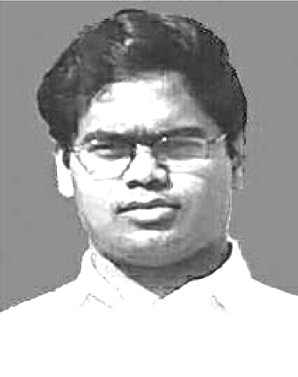
Technische Universität Dresden, Solid State Electronics Laboratory, Dresden, Germany
Vinay S. Vidyarthi received the B.Tech. degree from the Institute of Technology, BHU, Varanasi, India, in 2002 and the M. Tech. degree from the Indian Institute of Technology, Kanpur, India, in 2004. He is currently working toward the Ph.D. degree at the Solid-State Electronics Lab, Technische Universitrit Dresden, Germany.
His present research works include multi-target reactive sputtering technology for ferroelectric lea...Show More
Vinay S. Vidyarthi received the B.Tech. degree from the Institute of Technology, BHU, Varanasi, India, in 2002 and the M. Tech. degree from the Indian Institute of Technology, Kanpur, India, in 2004. He is currently working toward the Ph.D. degree at the Solid-State Electronics Lab, Technische Universitrit Dresden, Germany.
His present research works include multi-target reactive sputtering technology for ferroelectric lea...View more
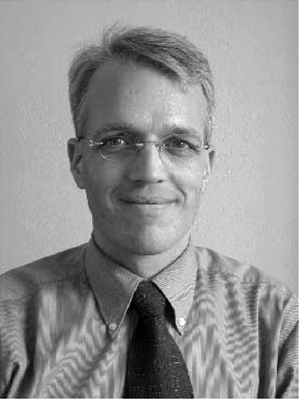
Technische Universität Dresden, Solid State Electronics Laboratory, Dresden, Germany
Gerald Gerlach received M.Sc. and Ph.D. degrees in electrical engineering from the Technische Universität Dresden, Germany, in 1983 and 1987, respectively. He worked in research and development in the field of measuring devices and sensors at several companies. In 1993 he became a professor at the Department of Electrical Engineering at Dresden University of Technology. Since 1996 he has been the head of the Solid-State E...Show More
Gerald Gerlach received M.Sc. and Ph.D. degrees in electrical engineering from the Technische Universität Dresden, Germany, in 1983 and 1987, respectively. He worked in research and development in the field of measuring devices and sensors at several companies. In 1993 he became a professor at the Department of Electrical Engineering at Dresden University of Technology. Since 1996 he has been the head of the Solid-State E...View more
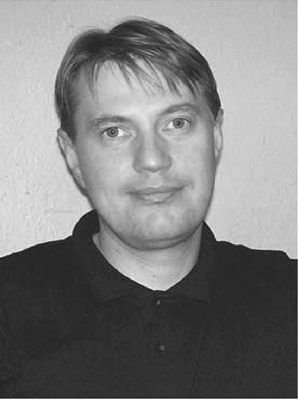
Department of Physics of Ferroelectrics and Piezoelectrics, Tver State University, Tver, Russia
Alexander V. Solnyshkin received the Diploma degree in physics and the Ph.D. degree in solid state physics from Tver State University, Tver, Russia, in 1993 and 1998, respectively. Currently, he works as a lecturer at the Department of Ferroelectric and Piezoelectric Physics at Tver State University.
His research interests are the study of pyroelectric, dielectric, and piezoelectric properties and switching processes of fe...Show More
Alexander V. Solnyshkin received the Diploma degree in physics and the Ph.D. degree in solid state physics from Tver State University, Tver, Russia, in 1993 and 1998, respectively. Currently, he works as a lecturer at the Department of Ferroelectric and Piezoelectric Physics at Tver State University.
His research interests are the study of pyroelectric, dielectric, and piezoelectric properties and switching processes of fe...View more
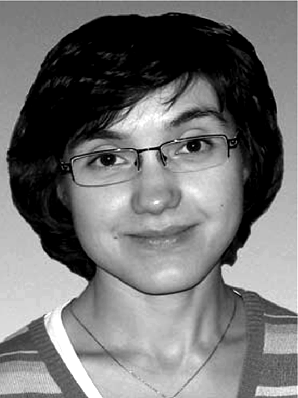
Department of Information Science and Applied Mathematicsematics, Tver State Technical University, Tver, Russia
Inna L. Kislova received the degree of Bachelor of Science and the Master of Science degrees from Tver State University, Tver, Russia, in 1997 and 1999, respectively. From 2000 to 2002, she was a postgraduated student at the University of Osnabrueck, Germany, and continued a postgraduate course at Tver State University from 2002 to 2004. She earned the Ph.D. degree from Tver State University in 2004. Currently she is work...Show More
Inna L. Kislova received the degree of Bachelor of Science and the Master of Science degrees from Tver State University, Tver, Russia, in 1997 and 1999, respectively. From 2000 to 2002, she was a postgraduated student at the University of Osnabrueck, Germany, and continued a postgraduate course at Tver State University from 2002 to 2004. She earned the Ph.D. degree from Tver State University in 2004. Currently she is work...View more

Technische Universität Dresden, Solid State Electronics Laboratory, Dresden, Germany
Gunnar Suchaneck received the Diploma degree in electronic engineering and the Ph.D. degree in physico-mathematical sciences from the Electrotechnical University - LETI, St. Petersburg, Russia, in 1980 and 1983, respectively. Since 1984 he has been a senior scientist at Technische Universitat (TU) Dresden, Germany. In 1997 he joined the Solid-State Electronics Lab of TU Dresden.
His current research interests include solid state sensor technology, IR- and UV-thin film sensors, thin film sensors based on PZT thin films, ion implanted and low pressure plasma surface-modified polymer thin films, noises in thin film sensors, and uncertainties of sensor property measurements.
Gunnar Suchaneck received the Diploma degree in electronic engineering and the Ph.D. degree in physico-mathematical sciences from the Electrotechnical University - LETI, St. Petersburg, Russia, in 1980 and 1983, respectively. Since 1984 he has been a senior scientist at Technische Universitat (TU) Dresden, Germany. In 1997 he joined the Solid-State Electronics Lab of TU Dresden.
His current research interests include solid state sensor technology, IR- and UV-thin film sensors, thin film sensors based on PZT thin films, ion implanted and low pressure plasma surface-modified polymer thin films, noises in thin film sensors, and uncertainties of sensor property measurements.View more

Technische Universität Dresden, Solid State Electronics Laboratory, Dresden, Germany
Vinay S. Vidyarthi received the B.Tech. degree from the Institute of Technology, BHU, Varanasi, India, in 2002 and the M. Tech. degree from the Indian Institute of Technology, Kanpur, India, in 2004. He is currently working toward the Ph.D. degree at the Solid-State Electronics Lab, Technische Universitrit Dresden, Germany.
His present research works include multi-target reactive sputtering technology for ferroelectric lead zirconate titanate (PZT) thin films, and development of an oxide electrode system for ferroelectric PZT-based electron devices.
Vinay S. Vidyarthi received the B.Tech. degree from the Institute of Technology, BHU, Varanasi, India, in 2002 and the M. Tech. degree from the Indian Institute of Technology, Kanpur, India, in 2004. He is currently working toward the Ph.D. degree at the Solid-State Electronics Lab, Technische Universitrit Dresden, Germany.
His present research works include multi-target reactive sputtering technology for ferroelectric lead zirconate titanate (PZT) thin films, and development of an oxide electrode system for ferroelectric PZT-based electron devices.View more

Technische Universität Dresden, Solid State Electronics Laboratory, Dresden, Germany
Gerald Gerlach received M.Sc. and Ph.D. degrees in electrical engineering from the Technische Universität Dresden, Germany, in 1983 and 1987, respectively. He worked in research and development in the field of measuring devices and sensors at several companies. In 1993 he became a professor at the Department of Electrical Engineering at Dresden University of Technology. Since 1996 he has been the head of the Solid-State Electronics Lab.
His research is focused on sensor and semiconductor technology, simulation and modeling of micromechanical devices and the development of solid-state sensors, especially pyroelectric infrared sensors and piezoresistive humidity and gas sensors.
From 1994 to 2000 Prof. Gerlach served as Deputy Dean and Dean of the Electrical Engineering Department at TU Dresden, respectively. Since 2000 he has been vice-president and 2006 president of the German Society for Measurement and Automatic Control (GMA), respectively, and since 2002 a member of the Presidential Board of the VDE (German Association of Engineers in Electrical Engineering, Electronics, Information Technology).
Gerald Gerlach received M.Sc. and Ph.D. degrees in electrical engineering from the Technische Universität Dresden, Germany, in 1983 and 1987, respectively. He worked in research and development in the field of measuring devices and sensors at several companies. In 1993 he became a professor at the Department of Electrical Engineering at Dresden University of Technology. Since 1996 he has been the head of the Solid-State Electronics Lab.
His research is focused on sensor and semiconductor technology, simulation and modeling of micromechanical devices and the development of solid-state sensors, especially pyroelectric infrared sensors and piezoresistive humidity and gas sensors.
From 1994 to 2000 Prof. Gerlach served as Deputy Dean and Dean of the Electrical Engineering Department at TU Dresden, respectively. Since 2000 he has been vice-president and 2006 president of the German Society for Measurement and Automatic Control (GMA), respectively, and since 2002 a member of the Presidential Board of the VDE (German Association of Engineers in Electrical Engineering, Electronics, Information Technology).View more

Department of Physics of Ferroelectrics and Piezoelectrics, Tver State University, Tver, Russia
Alexander V. Solnyshkin received the Diploma degree in physics and the Ph.D. degree in solid state physics from Tver State University, Tver, Russia, in 1993 and 1998, respectively. Currently, he works as a lecturer at the Department of Ferroelectric and Piezoelectric Physics at Tver State University.
His research interests are the study of pyroelectric, dielectric, and piezoelectric properties and switching processes of ferroelectric crystals, ceramics and films, thermal activation processes and relaxation in polar materials, and photovoltaic phenomena.
Alexander V. Solnyshkin received the Diploma degree in physics and the Ph.D. degree in solid state physics from Tver State University, Tver, Russia, in 1993 and 1998, respectively. Currently, he works as a lecturer at the Department of Ferroelectric and Piezoelectric Physics at Tver State University.
His research interests are the study of pyroelectric, dielectric, and piezoelectric properties and switching processes of ferroelectric crystals, ceramics and films, thermal activation processes and relaxation in polar materials, and photovoltaic phenomena.View more

Department of Information Science and Applied Mathematicsematics, Tver State Technical University, Tver, Russia
Inna L. Kislova received the degree of Bachelor of Science and the Master of Science degrees from Tver State University, Tver, Russia, in 1997 and 1999, respectively. From 2000 to 2002, she was a postgraduated student at the University of Osnabrueck, Germany, and continued a postgraduate course at Tver State University from 2002 to 2004. She earned the Ph.D. degree from Tver State University in 2004. Currently she is working as a lecturer at the Department of Information Science and Applied Mathematics, Tver State Technical Uni versity.
Her research interests are mathematical modeling and the study of optical and dielectric properties and switching processes of ferroelectric crystals, ceramics, and films.
Inna L. Kislova received the degree of Bachelor of Science and the Master of Science degrees from Tver State University, Tver, Russia, in 1997 and 1999, respectively. From 2000 to 2002, she was a postgraduated student at the University of Osnabrueck, Germany, and continued a postgraduate course at Tver State University from 2002 to 2004. She earned the Ph.D. degree from Tver State University in 2004. Currently she is working as a lecturer at the Department of Information Science and Applied Mathematics, Tver State Technical Uni versity.
Her research interests are mathematical modeling and the study of optical and dielectric properties and switching processes of ferroelectric crystals, ceramics, and films.View more


